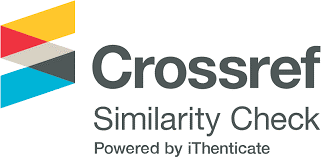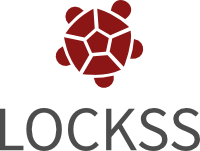Digital implementation of three-phase rectifier with deadbeat controller
DOI:
https://doi.org/10.18618/REP.2002.1.030038Abstract
A full digital control of a voltage source converter (VSC) rectifier is presented. The behavior of the AC and DC sides were modeled and used for the design of the AC current tracking controller and DC voltage regulator. The AC current control, based on the deadbeat strategy is presented in a simple and intuitive way. The DC side PI controller is designed based on the linearized model of the converter. A simple and efficient Phase Locked Loop (PLL) based on the deadbeat strategy is presented. The performance of the complete system is verified by numerical simulation and experimental results, validating the proposed model and control strategy. Effect of parameter mismatch is also discussed.
Downloads
References
Buso, S. "Digital Control of Power Converters" (Lecture notes), inhttp://www.dsce.fee.unicamp.br/~antenor/Digital.html;
Matakas, L. Jr, Masada, E., Morizane, T., Koseki, S. "Full DigitalControl of Power Electronics Converter Using Transputers"Proceedings of the 4th Transputer/Occam International Conference,June/92, Tokyo, Japan;
ADMC401 Evaluation Kit - (http://www.analog.com/);
Duarte, J.L.; Wintjens, J.A.A.; Rozenboom, J. "Advantages of aFully Digitized Preconditioner". In: International Conference onPower Quality: End-use Applications and Perspectives - PQA'94,3., Amsterdam, 1994. Proceedings. Amsterdam, KEMA, 1994, Vol.1.
Komatsu, W.; Kaiser, W.; Matakas, L."PWM Current SourceConverter with Deadbeat Control". In: International PowerElectronics Conference, Tokyo, 2000. Proceedings. Tokyo, IEEJ,2000, Vol.2, p.911-917;
Qiao C.; Smedley, K.M.; "A Topology Survey of Single-StagePower Factor Corrector with a Boost Type Input-Current-Shapper"In: Applied Power Electronics Conference 2000, Proceedings. Vol.1;p.460-467.
Kazmierkowski, M.P.; Malesani, L. "Current Control Techniques for Three-Phase Voltage-Source PWM Converters: A Survey". IEEE Transactions on Industrial Electronics, Vol. 45, No. 5, October1998. p. 691-703. https://doi.org/10.1109/41.720325 DOI: https://doi.org/10.1109/41.720325
Buso, S.; Malesani, L.; Mattavelli, P. "Deadbeat Current Control for Active Filters". IEEE 1998.
Kawamura, A.; Haneyoshi, T.; Hoft, R. G. "Deadbeat ControlledPWM Inverter with Paràmeter Estimation Using Only Voltage Sensor" IEEE Transactions on Power Electronics, Vol. 3, No. 2 April 1988. https://doi.org/10.1109/63.4341 DOI: https://doi.org/10.1109/63.4341
Kawamura, A.; Yokoyama, T. "Comparison of Five DifferentApproaches for Real Time Digital Feedback Control of PWMInverters". IEEE, 1990.
Kawamura, A.; Yokoyama, T. "Comparison of Five Control Methods For Digitally Feedback Controlled PWM Inverters". EPE, Firenze,1991.
Kawabata, T.; Miyashita, T.; Yamamoto, Y. "Dead Beat Control ofThree Phase PWM Inverter" IEEE Transactions on PowerElectronics, Vol. 5, No. 1, January 1990. https://doi.org/10.1109/63.45996 DOI: https://doi.org/10.1109/63.45996
Miguchi, Y.; Kawamura, A.; Hoft, R. "Optimal Pole Assignment forPower Electronics Systems". Annual IEEE Power ElectronicsSpecialists Conference, Toulouse, 1985. https://doi.org/10.1109/PESC.1985.7070931 DOI: https://doi.org/10.1109/PESC.1985.7070931
Matakas Jr., L. "High Power, High Performance Parallel Connected Multiconverters: Analysis and Control" In: 11o Congresso Brasileirode Automática, São Paulo, SP. 1996, CBA.
Astrom, K.; Wittenmark, B. "Computer Controlled Systems - Theory And Design" 2nd ed. Prentice-Hall International Editions. 1990.
Dorf, R.; Bishop, R. "Modern Control Systems" 8a ed. Addison-Wesley. 1998
Downloads
Published
How to Cite
Issue
Section
License
Copyright (c) 2002 Eletrônica de Potência

This work is licensed under a Creative Commons Attribution 4.0 International License.















